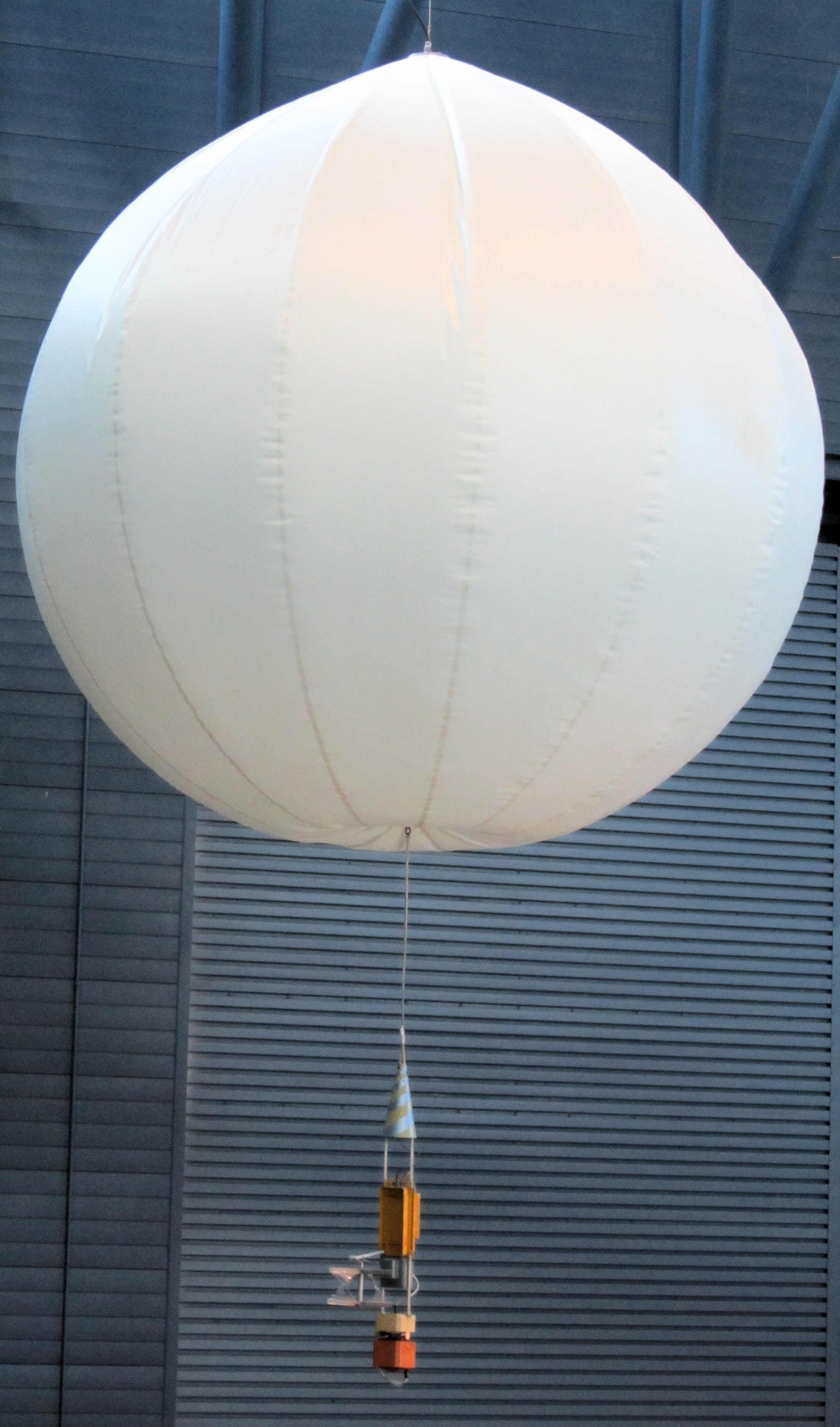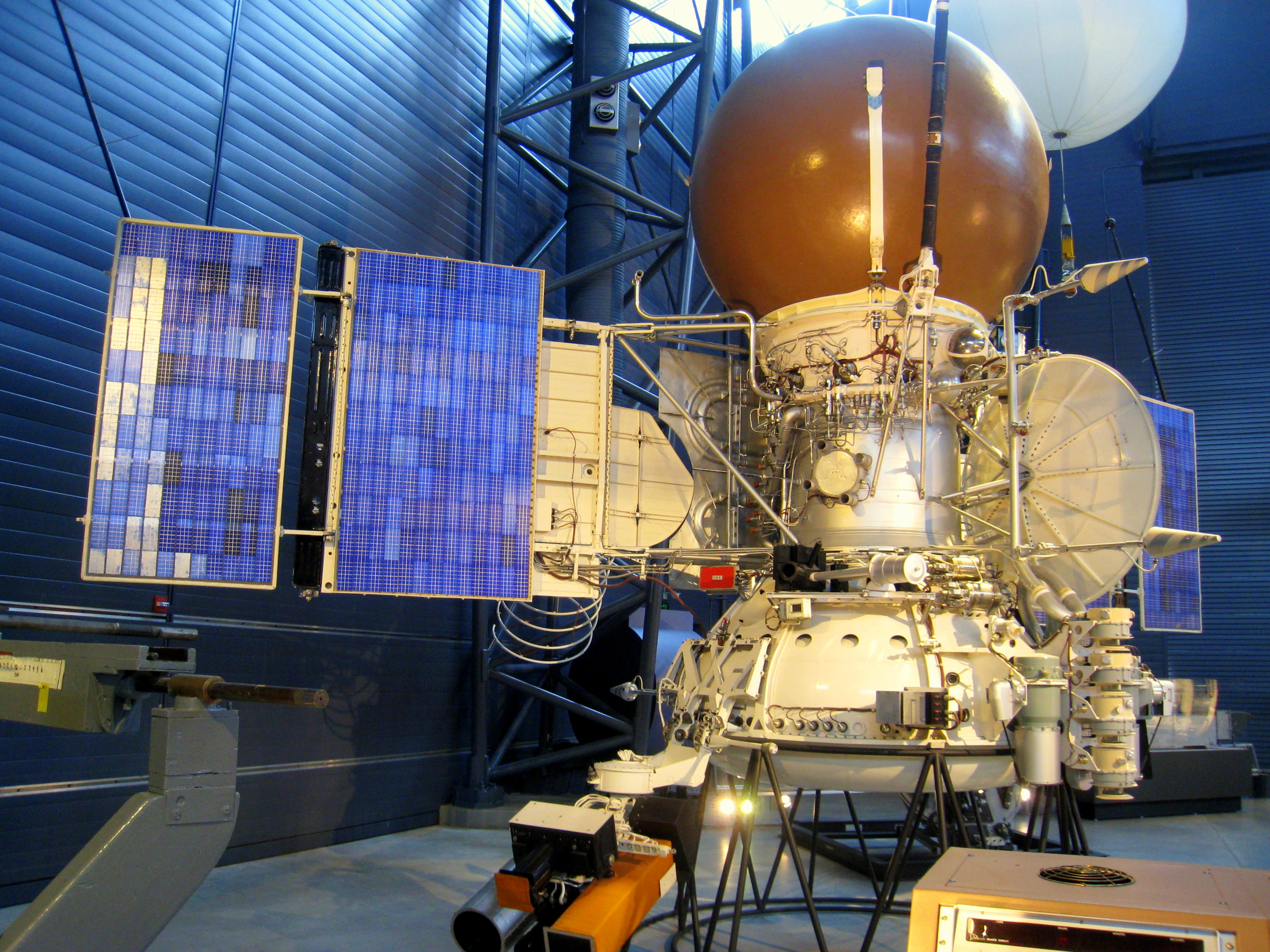Winston
Lorenzo von Matterhorn
- Joined
- Jan 31, 2009
- Messages
- 9,560
- Reaction score
- 1,749
I'd forgotten about this. Very impressive...
Vega 1 Balloon
https://nssdc.gsfc.nasa.gov/nmc/spacecraftDisplay.do?id=1984-125F
Description
A constant-pressure instrumented balloon aerostat was deployed from the upper heat protection hemisphere of each if the two Vega lander craft immediately after entry into the atmosphere. The primary scientific objective of the Vega balloon probes was to obtain information about the large- and small-scale motions, structure, and cloud properties of the Venus atmosphere at the float altitude. The probes floated at an altitude of about 54 km in the middle, most active layer of the Venus three-tiered cloud system and measured the local atmospheric dynamics, pressure, temperature, lightning, illumination levels, and cloud properties over a period of about 46 hours in both the night- and day-side.
Spacecraft and Subsystems
The Vega balloon probe comprised a 3.4 meter diameter balloon and a gondola, suspended below the balloon by a 13 meter long tether strap. The total mass of the deployed balloon probe was 21.5 kg: 12.5 kg for the balloon and tether, 6.9 kg for the gondola, and 2.1 kg of helium in the balloon. The balloon, gondola, parachute, ballast, tanks of helium, and timing electronics and pyrotechnic release devices with a total mass of 120 kg were stored in a toroidal compartment surrouding the lander antenna before deployment.
The balloon was made of a teflon cloth matrix coated with teflon film and filled with helium to 30 mbar overpressure. The diffusion of helium from the balloon was slow enough that the balloon would outlast the probe battery lifetime, losing less than 5% of its helium and 500 meters of altitude. The balloon itself was transparent to the downlink radio frequency used.
The gondola was 1.2 meters high and had three parts, connected by straps. The upper section, connected to the tether, was a 37 cm long, 15 degree half-angle conical antenna 14 cm diameter at its base. The middle section was connected by two straps to the upper section with dimensions approximately 40.8 x 14.5 x 13.0 cm. The upper part of the section contained a radio transmitter and modulator, data-handling system, and signal-processing and power-regulating electronics. The lower part had pressure and illumination sensors and a deployable arm which held temperature sensors and an anemometer. The lower section was 9.0 x 14.5 x 15.0 cm, was also connected to the middle section by two straps, and held the batteries and nephelometer. The gondola was painted with a white coating that resisted corrosion by sulfuric acid and increased the surface albedo.
The radio transmitter had two modes of operation. In telemetry, or TM, mode a 30 second transmission of pure carrier signal for use in the VLBI tracking was followed by a 270 second period of transmission of 900 bits (at 4 bits/s for the first 840 bits and 1 bit/s for the last 60) of data collected over the previous 30 minutes, followed by another 30 second carrier transmission. In coordinated transmission (KI) mode two tones with a suppressed carrier were transmitted for 330 seconds for use in the VLBI tracking. Three consecutive TM transmissions and one KI were made every 2 hours during the first 10 hours and from roughly hours 22 to 34 of the flight, at other times one TM and one KI transmission were made every two hours to conserve battery power. The carrier signal frequency was 1.6679 GHz and the radiated power was about 4.5 W. The power supply consisted of 1 kg of lithium batteries with 250 W-hrs capacity and an expected life of 46 to 52 hours.
Twenty ground stations were used for Very Long Baseline Interferometry (VLBI) tracking of the balloons. Six of these stations were on Soviet territory and were coordinated by IKI, the Soviet space agency. The other fourteen antennas were coordinated by CNES (France) and included three NASA Deep Space Network antennas and eleven radio astronomy observatories.
Mission Profile
The Vega 1 Lander/Balloon capsule entered the Venus atmosphere (125 km altitude) at 2:06:10 UT (Earth received time; Moscow time 5:06:10 a.m.) on 11 June 1985 at roughly 11 km/sec. At approximately 2:06:25 UT the parachute attached to the landing craft cap opened at an altitude of 64 km. The cap and parachute were released 15 seconds later at 63 km altitude. The balloon package was pulled out of its compartment by parachute 40 seconds later at 61 km altitude, at 8.1 degrees N, 176.9 degrees east. A second parachute opened at an altitude of 55 km, 200 seconds after entry, extracting the furled balloon. The balloon was inflated 100 seconds later at 54 km and the parachute and inflation system were jettisoned. The ballast was jettisoned when the balloon reached roughly 50 km and the balloon floated back to a stable height between 53 and 54 km some 15 to 25 minutes after entry. The mean stable height was 53.6 km, with a pressure of 535 mbar and a temperature of 300-310 K in the middle, most active layer of the Venus three-tiered cloud system. The balloon drifted westward in the zonal wind flow with an average speed of about 69 m/s at nearly constant latitude. The probe crossed the terminator from night to day at 12:20 UT on 12 June after traversing 8500 km. The probe continued to operate in the daytime until the final transmission was received at 00:38 UT on 13 June from 8.1 N, 68.8 E after a total traverse distance of 11,600 km. It is not known how much further the balloon travelled after the final communication.
Vega 2 Balloon
https://nssdc.gsfc.nasa.gov/nmc/spacecraftDisplay.do?id=1984-128F
Nice Soviet mission compilation site where I stumbled upon the balloon thing:
https://mentallandscape.com/V_Vega.htm





Vega 1 Balloon
https://nssdc.gsfc.nasa.gov/nmc/spacecraftDisplay.do?id=1984-125F
Description
A constant-pressure instrumented balloon aerostat was deployed from the upper heat protection hemisphere of each if the two Vega lander craft immediately after entry into the atmosphere. The primary scientific objective of the Vega balloon probes was to obtain information about the large- and small-scale motions, structure, and cloud properties of the Venus atmosphere at the float altitude. The probes floated at an altitude of about 54 km in the middle, most active layer of the Venus three-tiered cloud system and measured the local atmospheric dynamics, pressure, temperature, lightning, illumination levels, and cloud properties over a period of about 46 hours in both the night- and day-side.
Spacecraft and Subsystems
The Vega balloon probe comprised a 3.4 meter diameter balloon and a gondola, suspended below the balloon by a 13 meter long tether strap. The total mass of the deployed balloon probe was 21.5 kg: 12.5 kg for the balloon and tether, 6.9 kg for the gondola, and 2.1 kg of helium in the balloon. The balloon, gondola, parachute, ballast, tanks of helium, and timing electronics and pyrotechnic release devices with a total mass of 120 kg were stored in a toroidal compartment surrouding the lander antenna before deployment.
The balloon was made of a teflon cloth matrix coated with teflon film and filled with helium to 30 mbar overpressure. The diffusion of helium from the balloon was slow enough that the balloon would outlast the probe battery lifetime, losing less than 5% of its helium and 500 meters of altitude. The balloon itself was transparent to the downlink radio frequency used.
The gondola was 1.2 meters high and had three parts, connected by straps. The upper section, connected to the tether, was a 37 cm long, 15 degree half-angle conical antenna 14 cm diameter at its base. The middle section was connected by two straps to the upper section with dimensions approximately 40.8 x 14.5 x 13.0 cm. The upper part of the section contained a radio transmitter and modulator, data-handling system, and signal-processing and power-regulating electronics. The lower part had pressure and illumination sensors and a deployable arm which held temperature sensors and an anemometer. The lower section was 9.0 x 14.5 x 15.0 cm, was also connected to the middle section by two straps, and held the batteries and nephelometer. The gondola was painted with a white coating that resisted corrosion by sulfuric acid and increased the surface albedo.
The radio transmitter had two modes of operation. In telemetry, or TM, mode a 30 second transmission of pure carrier signal for use in the VLBI tracking was followed by a 270 second period of transmission of 900 bits (at 4 bits/s for the first 840 bits and 1 bit/s for the last 60) of data collected over the previous 30 minutes, followed by another 30 second carrier transmission. In coordinated transmission (KI) mode two tones with a suppressed carrier were transmitted for 330 seconds for use in the VLBI tracking. Three consecutive TM transmissions and one KI were made every 2 hours during the first 10 hours and from roughly hours 22 to 34 of the flight, at other times one TM and one KI transmission were made every two hours to conserve battery power. The carrier signal frequency was 1.6679 GHz and the radiated power was about 4.5 W. The power supply consisted of 1 kg of lithium batteries with 250 W-hrs capacity and an expected life of 46 to 52 hours.
Twenty ground stations were used for Very Long Baseline Interferometry (VLBI) tracking of the balloons. Six of these stations were on Soviet territory and were coordinated by IKI, the Soviet space agency. The other fourteen antennas were coordinated by CNES (France) and included three NASA Deep Space Network antennas and eleven radio astronomy observatories.
Mission Profile
The Vega 1 Lander/Balloon capsule entered the Venus atmosphere (125 km altitude) at 2:06:10 UT (Earth received time; Moscow time 5:06:10 a.m.) on 11 June 1985 at roughly 11 km/sec. At approximately 2:06:25 UT the parachute attached to the landing craft cap opened at an altitude of 64 km. The cap and parachute were released 15 seconds later at 63 km altitude. The balloon package was pulled out of its compartment by parachute 40 seconds later at 61 km altitude, at 8.1 degrees N, 176.9 degrees east. A second parachute opened at an altitude of 55 km, 200 seconds after entry, extracting the furled balloon. The balloon was inflated 100 seconds later at 54 km and the parachute and inflation system were jettisoned. The ballast was jettisoned when the balloon reached roughly 50 km and the balloon floated back to a stable height between 53 and 54 km some 15 to 25 minutes after entry. The mean stable height was 53.6 km, with a pressure of 535 mbar and a temperature of 300-310 K in the middle, most active layer of the Venus three-tiered cloud system. The balloon drifted westward in the zonal wind flow with an average speed of about 69 m/s at nearly constant latitude. The probe crossed the terminator from night to day at 12:20 UT on 12 June after traversing 8500 km. The probe continued to operate in the daytime until the final transmission was received at 00:38 UT on 13 June from 8.1 N, 68.8 E after a total traverse distance of 11,600 km. It is not known how much further the balloon travelled after the final communication.
Vega 2 Balloon
https://nssdc.gsfc.nasa.gov/nmc/spacecraftDisplay.do?id=1984-128F
Nice Soviet mission compilation site where I stumbled upon the balloon thing:
https://mentallandscape.com/V_Vega.htm









